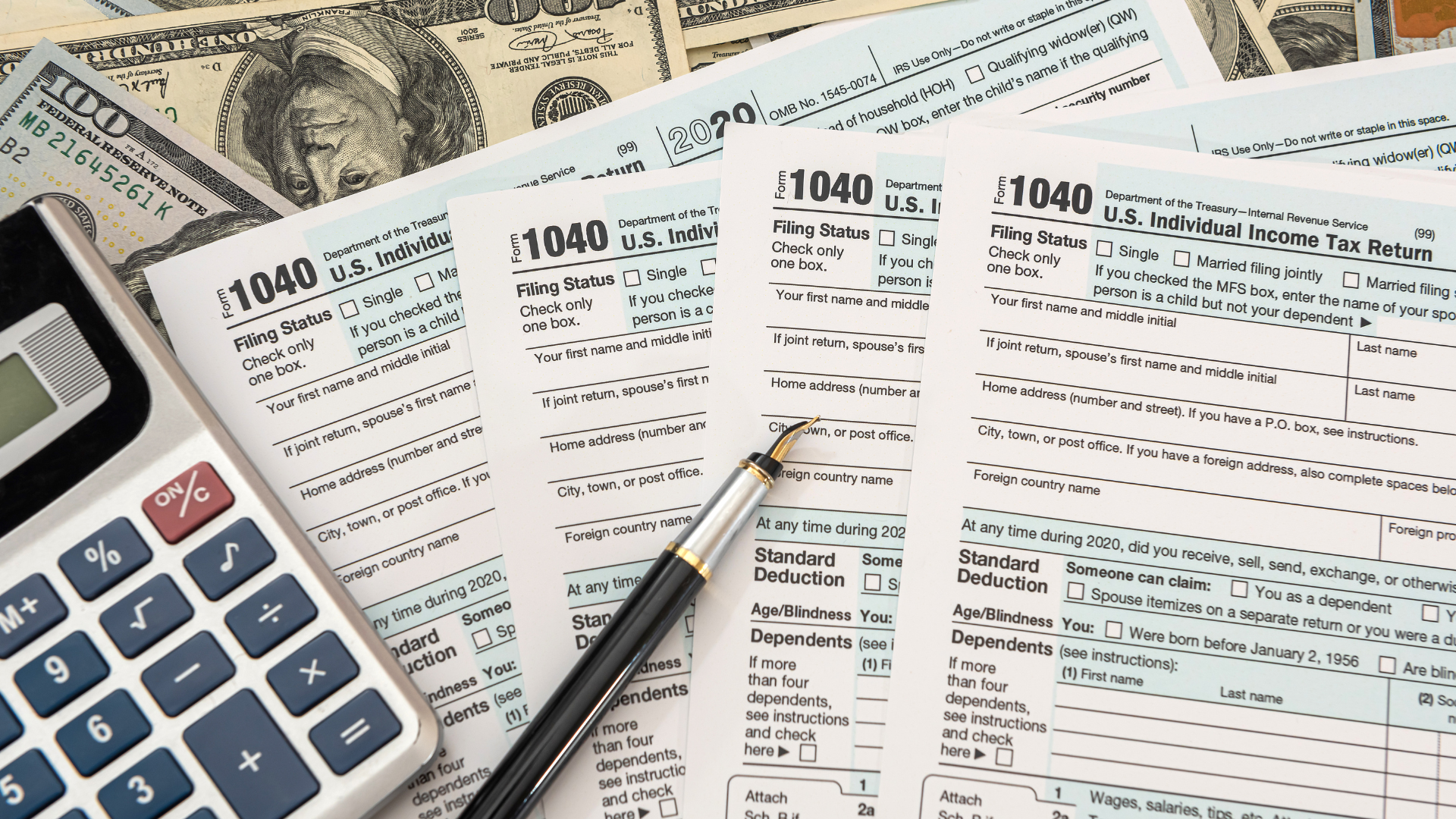If you earned any income over the past year, April 15th likely stresses you out. I’ve seen many well-intentioned taxpayers scramble to file their personal income taxes correctly and even pay penalties for filing late. However, learning some personal income tax basics can save you time, money, and panic next tax season.
This comprehensive beginner’s guide covers key tax concepts in straightforward language. With a handle on these essential ideas, you can file your taxes accurately and optimize to reduce your income tax bill legally. Let’s get started!
What Exactly Are Income Taxes?
Income taxes represent the money individuals and businesses owe based on earnings or profit. Unlike sales tax added onto purchases, income tax comes directly out of salaries, investment profits, rental revenue, and other income streams. In 2023, federal personal income tax rates range between 10% – 37% depending on income levels. State and local jurisdictions also levy additional income tax rates.
As a taxpayer, you must report all taxable income from any source on annual tax returns filed with the IRS and your state by April 15th. The only exceptions are retirement contributions, municipal bond interest, and some foreign income. Read below for more on what gets taxed.
Why Do We Pay Income Taxes?
Taxes fund around two thirds of total US Federal spending across defense, healthcare, pensions, infrastructure development, and all other governmental functions. So while no one loves shrinking their hard-earned paycheck, income tax revenue plays a vital role!
Beyond supporting necessary community services, amenities, and economic growth – income taxes also make societies more equitable. Progressive tax systems charge higher earners increased rates to re-distribute wealth concentration and subsidize opportunities for lower earners.
What Income Sources Get Taxed?
Many Americans overpay their income taxes simply because they don’t actually know the full scope of taxable income categories. Here are the most common sources the IRS taxes:
Employment or Self-Employment Income
Salaries, hourly wages, tips, commissions, and net income from a business/freelance work all count as taxable income. This category usually makes up the bulk of income for a typical person. Your employer or clients send you W-2 and 1099 forms documenting this income.
Investment Income
Distributions from stock dividends, mutual fund capital gain distributions, as well as earnings from selling any investments at a profit trigger tax liability. Brokerages send out 1099 forms reporting dividends, interest, and proceeds from any of your investment transactions.
Retirement Income
Once you start withdrawing from 401k accounts, IRAs or pensions in retirement, disbursements become taxable income. However, if you have any Roth savings (you already paid tax on contributions), that portion avoids taxation.
Rental Income
Revenues collected from owning real estate get taxed after subtracting eligible deductions for expenses, depreciation, interest, repairs, and improvements. Schedule E documents net rental earnings.
Gambling or Lottery Winnings
Hitting a slot machine jackpot or winning big in Vegas constitutes taxable income above $600. Many gamblers wrongly assume all casino payouts are tax-free!
Canceled Debts
If any lender forgives part of a loan balance you owe, that amount gets treated as taxable income unless you file for insolvency. Banks issue 1099-C forms reporting discharged debts.
Now you understand the standard categories accounting for the bulk of income that feeds into your annual tax assessment from the IRS and state authorities. Next, let’s unpack an important related concept – tax deductions.
How Do Tax Deductions and Credits Work?

The government also offers taxpayers legal loopholes to reduce total income subject to taxation through deductions and credits. Smart filers aim to maximize these Write-offs to retain more of their hard earned money!
Here is how they work to legitimately decrease your income tax burden:
Tax Deductions
Itemized deductions reduce your total taxable income. Common examples include home mortgage interest, property taxes, state income taxes, charitable gifts, and out-of-pocket medical expenses exceeding 7.5% of your Adjusted Gross Income.
So for instance, a $20,000 annual deduction lowers your total taxable income down to $180,000 if original income equaled $200,000. Straightforward math means paying income tax on a lower sum of money!
Tax Credits
Credits directly reduce taxes owed rather than just taxable income. So a $2,000 tax credit eliminates $2,000 from your final tax bill. The most common individual tax credits include the Child Tax Credit and Child and Dependent Care Credit. Education credits also exist for tuition and fees paid.
To optimize savings, taxpayers aim to minimize taxable income using every deduction possible while also racking up eligible credits. Now that you understand the concept of legal loopholes, let’s unpack how tax liability actually gets calculated.
How Is Taxable Income Calculated?
Figuring out tax rates feels intimidating to many filers. But the IRS follows a standard formula to compute exactly how much tax individuals owe based on their specific income situation. Here are the six steps:
1. Sum All Income
Add up every penny earned from the taxable buckets noted earlier – salaries, investment earnings, rental revenue, etc. Some income like municipal bond interest gets excluded.
2. Subtract Adjustments
Retirement plan contributions (401k, IRA, HSA) qualify as above-the-line deductions to reduce income. Alimony payments also lower total income.
3. Calculate AGI
Take total income from Step 1 and subtract adjustments from Step 2 to compute your Adjusted Gross Income (AGI). This is an important number determining phase-outs and eligibility for deductions/credits.
4. Subtract Deductions
Choose between the standard deduction ($12,950 for single filers or $25,900 for married joint filers in 2023) OR itemized deductions if total expenses exceed the standard threshold. Deductions lower total taxable income.
5. Calculate Taxable Income
After subtracting deductions, the remaining sum constitutes your actual taxable income. This number sets the level of income exposed to taxation at your applicable rates.
6. Compute Tax Bill
Look up your tax rates based on taxable income and calculate total tax owed. Then subtract any credits earned to determine your final tax liability amount owed or refunded.
While that sounds complex, all the heavy lifting gets done for you in tax software. But understanding the concepts empowers you to make smart decisions lowering total income tax owed.
Now that you’ve got the basics of taxable income calculation down pat, let’s examine the different tax structures and rates in effect currently.
Current Federal Income Tax Rates and Brackets
The IRS applies seven progressive federal income tax brackets currently based on ranges of taxable income. Current 2023 rates range from 10% to 37%:
| Federal Tax Bracket | Single Filers Taxable Income | Married Joint Filers Taxable Income |
|---|---|---|
| 10% | $0 to $11,000 | $0 to $22,000 |
| 12% | $11,001 to $44,725 | $22,001 to $89,450 |
| 22% | $44,726 to $95,375 | $89,451 to $190,750 |
| 24% | $95,376 to $182,100 | $190,751 to $364,200 |
| 32% | $182,101 to $578,125 | $364,201 to $693,750 |
| 35% | $578,126 to $693,750 | $693,751 to $1,047,350 |
| 37% | Over $693,751 | Over $1,047,351 |
As you earn more taxable income, additional portions spill into higher brackets triggering bigger tax bills. However, US tax brackets utilize marginal tax rates rather than absolute rates.
For example, single filers earning $115,000 don’t pay 24% tax on their whole $115,000 sum. Instead, they pay 10% up to $11,000, then 12% up to $44,725, then 22% up to $95,375, and finally 24% only for the last $20K.
This means getting bumped into higher tax brackets only impacts the marginal slice above each threshold – not your entire taxable income. Keeping bracket thresholds and marginal rates in mind aids tax planning.
Tips to Reduce Taxable Income and Taxes Owed

While the tax scales may always feel tipped against the little guy, some perfectly legal tips can help individuals keep more of their hard-earned income. Become a savvier taxpayer and boost your bottom line by:
Contributing to Retirement Accounts
Fully funding 401ks, IRAs, HSAs, and flexible spending accounts with pre-tax dollars lowers current year tax bills. The beauty lies in accumulating growth tax-free for decades.
Harvesting Tax Losses
Sell any losing investments to offset capital gains taxes owed on winners. Long term gains booked over one year benefit from preferable tax treatment.
Donating to Charity
If itemizing deductions, gift appreciated stocks rather than cash to avoid capital gains tax and deduct the full fair market value as a charitable contribution.
Taking Advantage of Credits
Don’t overlook tax credits for electric vehicles, energy efficiency home improvements, higher education costs, and having children. Free money from Uncle Sam seriously adds up.
Starting a Business
Self-employed individuals can legally deduct business expenses for vehicles, home offices, equipment, insurance plans, and even trips related to their work.
Getting in the weeds on intricate tax code details sounds dreadful to most. But a little effort goes a long way toward maximizing income retained after the tax man taketh. Even familiarizing yourself at a basic level with the essential tax concepts above sets you ahead of the curve coming into each filing season.
Commit to spending an hour reviewing your prior year return and studying deductions and credits you might qualify for this year using IRS resources. Just small tweaks could save thousands over the coming decade. Why voluntarily donate extra hard-earned money when a few prudent planning strategies can fatten your bank account instead?
